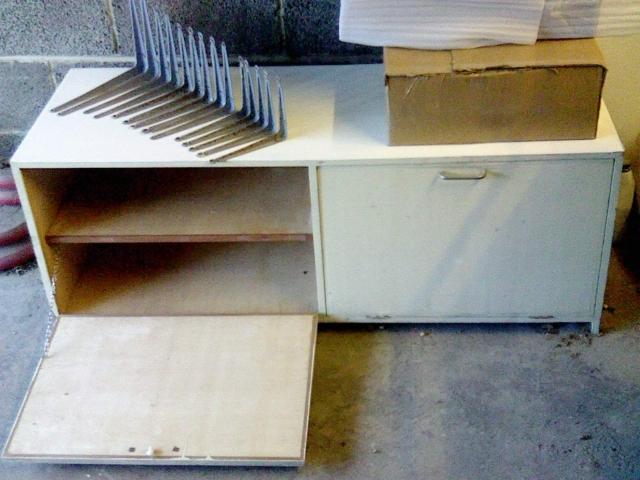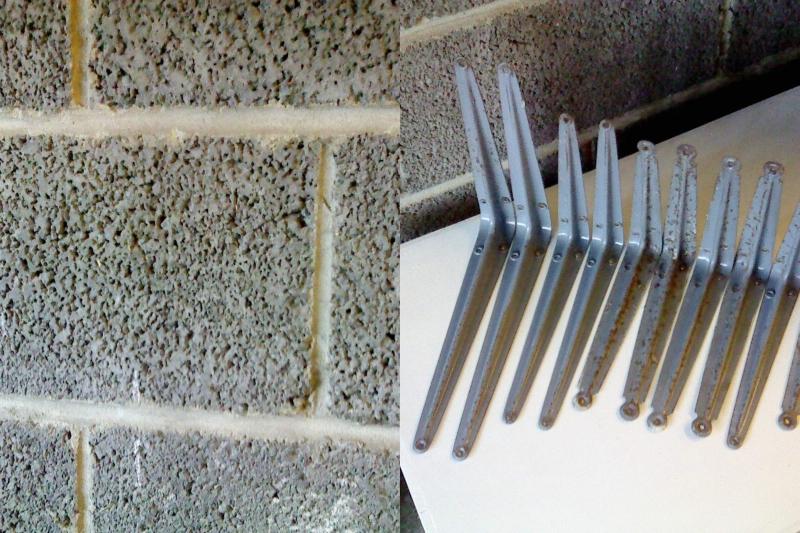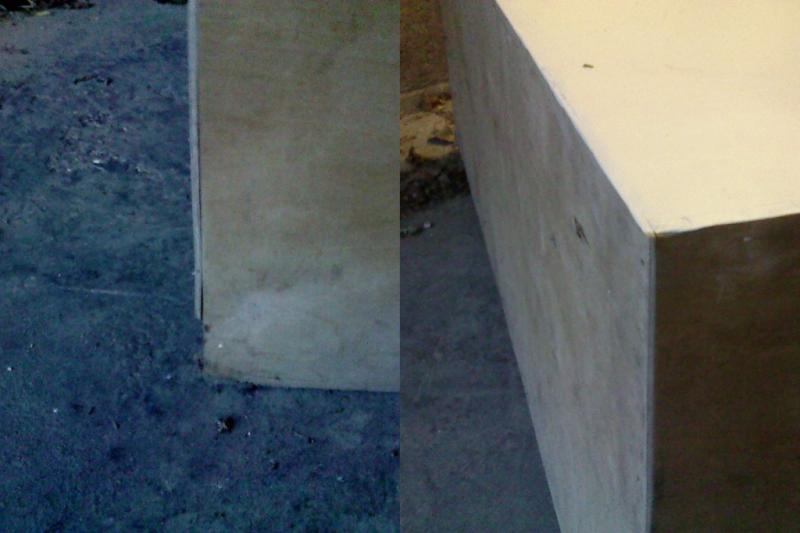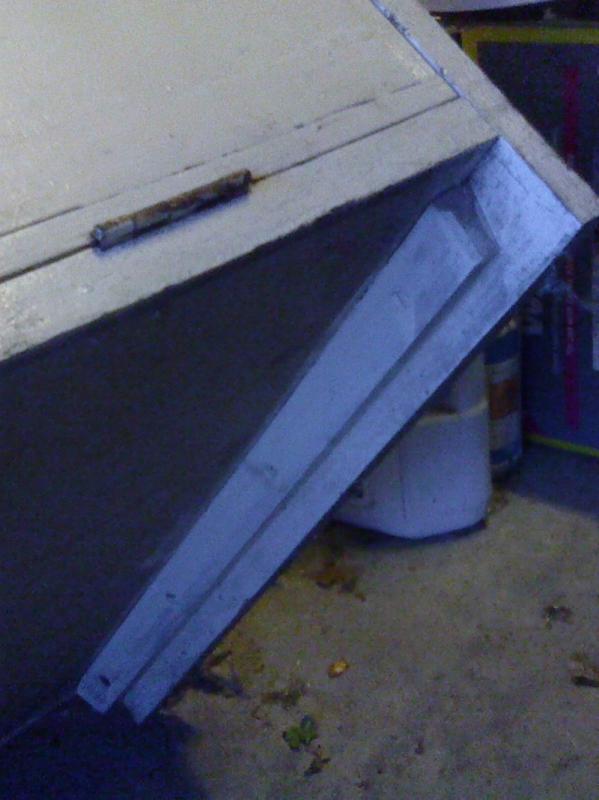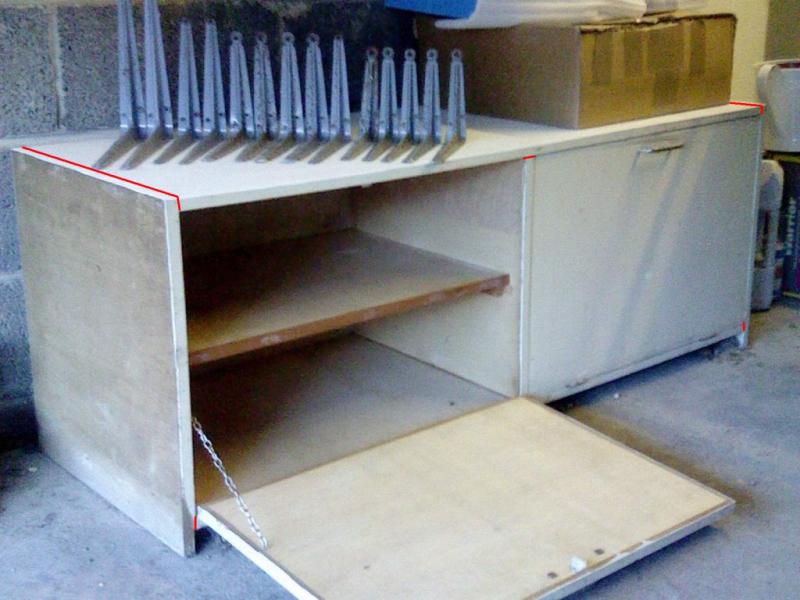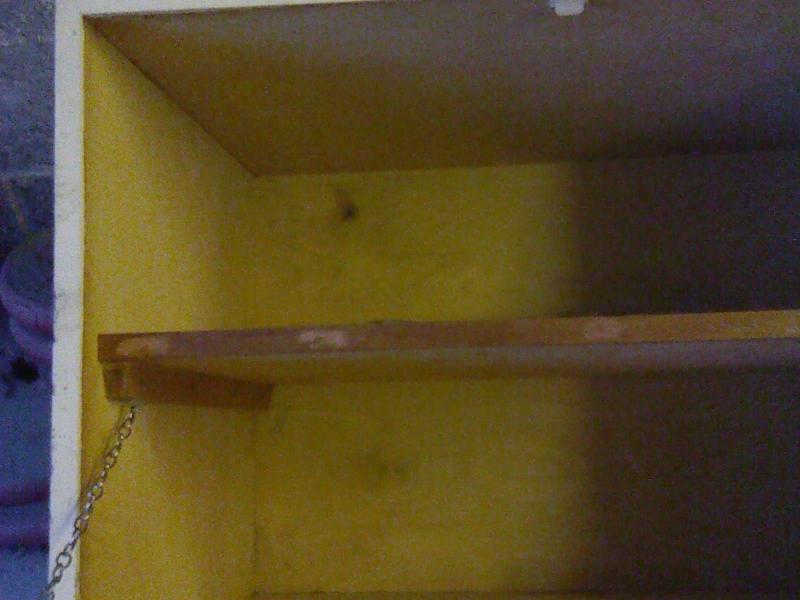I hope you can see the pictures.
I need to fix this to a garage wall, but it's very heavy and am not sure if the brackets I have are sufficient and what wall fixings I need.
The blocks are at least 35 years old, so I presume they're proper breezeblocks.
The cupboard is about 140 cm x 50 cm x 50 cm and mostly solid wood or something pretty heavy.
The brackets are very old but in good condition (bit of rust on some of them) and are true as I've measured them with a set square.
The two largest ones are:
12”/30cm x 10”/25.5cm - 2 of them
10”/25.5cm x 8”/20cm - 2 of them
The drill bits I have are the masonry ones supplied in the standard Bosch DIY set like this:
http://www.amazon.co.uk/gp/product/...f_rd_t=101&pf_rd_p=431079167&pf_rd_i=79903031
And I only have the bog-standard Bosch PSB 18 Li Cordless 18 Volt Hammer Drill, not an impact drill.
Do you think the brackets would be strong enough or would you ditch them for better brackets or something else? I'd like to make do with what I have, if I can, but I'd also like to get it right.
Perhaps most importantly, what Rawlplugs and screws I should use?
Any help would be appreciated.
Cheers.
I need to fix this to a garage wall, but it's very heavy and am not sure if the brackets I have are sufficient and what wall fixings I need.
The blocks are at least 35 years old, so I presume they're proper breezeblocks.
The cupboard is about 140 cm x 50 cm x 50 cm and mostly solid wood or something pretty heavy.
The brackets are very old but in good condition (bit of rust on some of them) and are true as I've measured them with a set square.
The two largest ones are:
12”/30cm x 10”/25.5cm - 2 of them
10”/25.5cm x 8”/20cm - 2 of them
The drill bits I have are the masonry ones supplied in the standard Bosch DIY set like this:
http://www.amazon.co.uk/gp/product/...f_rd_t=101&pf_rd_p=431079167&pf_rd_i=79903031
And I only have the bog-standard Bosch PSB 18 Li Cordless 18 Volt Hammer Drill, not an impact drill.
Do you think the brackets would be strong enough or would you ditch them for better brackets or something else? I'd like to make do with what I have, if I can, but I'd also like to get it right.
Perhaps most importantly, what Rawlplugs and screws I should use?
Any help would be appreciated.
Cheers.


